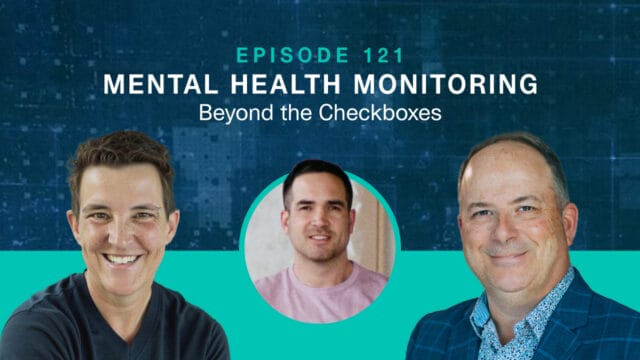
Holiday Bonus Episode: Safety Tips You Need This Season | Risk Matrix Episode 122
THE RISK MATRIX Cutting-edge podcast on occupational safety and risk management. Hosted by industry titans: JAMES JUNKIN, MS, CSP, MSP,…
Identifying and understanding these seven industry trends can help companies promote job site safety and safeguard workers from harm.

As industries evolve and rapidly advance, field teams will face new challenges year in and year out. However, for at least 2023 and the foreseeable future, no challenge will stand firmer on center stage than job site safety.
Companies are going to great lengths to safeguard their most valuable asset – the workforce – against harm on increasingly fast-paced and potentially hazardous job sites. And many businesses are finding success through modern strategies like integrating advanced technologies, creating inclusive safety cultures, and an increased focus on mental health and well-being.
This article discusses seven emerging job site safety trends reshaping how companies safeguard their workers from harm.
A skilled labor shortage is a significant challenge facing hiring companies and contractors, as both need more qualified workers to help grow their businesses while maintaining job site safety.
However, every site’s labor force comprises many different crafts, all requiring specialized training. And the more roles a hiring company needs, the more difficult it becomes to fill them.
Such roles may include the following:
Here are three strategies employers might consider to keep their businesses moving forward when lacking a sufficient skilled workforce:
The Occupational Safety and Health Administration (OSHA) has frequently consulted the Centers for Disease Control and Prevention (CDC) to develop recommended employer guidelines. This practice has become especially prevalent in recent years when illnesses (like those brought on by the COVID-19 pandemic) have become a focal point.
However, how employers respond to these guidelines varies, with some companies adhering to this advice more than others. And those who take a less aggressive approach to risk reduction, particularly in regions with high illness transmission, may suffer harsh consequences.
As such, all companies should consider taking these recommendations for reasons that include the following:
There is a growing recognition of the importance of mental health and well-being in the workplace. Safety and health programs increasingly focus on addressing psychological hazards, stress management, and promoting work-life balance to support employee mental well-being.
Several job site-related factors can contribute to mental health concerns. More specifically, workers may experience any of the following:
Promoting general well-being and job site safety requires improving mental health on the job site.
When companies support mental health initiatives, they signal to site teams that they genuinely care about them as individuals, not just as labor. This gesture helps build stronger relationships between management and its workers, boosting productivity on top of safety.
Expanding demographics at job sites can present challenges for occupational safety and health. A more diverse workplace may have an unfavorable impact on some workers due to any of the following:
As such, safety professionals must have DEI initiatives that support workers receiving fair treatment, advancement opportunities, and representation to combat safety gaps.
First, leaders should understand how racial prejudice, language obstacles, and cultural differences affect how employees receive training and adhere to safety instructions. They should also review the language organizations use in their safety rules, practices, and communications to ensure it doesn’t exclude others.
Next, management can assist their employers in creating a strategy to overcome these gaps, such as:
Management can also leverage data to understand the demands of various worker groups. However, they must be mindful of the measurements they choose to analyze.
Many businesses believe diversity metrics refer only to demographic data, such as the number of women or minority groups they employ. While that data is essential, those numbers are outcomes, not solutions.
Instead, management should focus on process metrics that assist in uncovering potential hiring, evaluation, and promotion problems, even if they can be a good sign of institutional biases for an accurate portrayal of genuine workplace diversity. These measures include the following:
The development of minority workers’ skill sets and their connection to managers (with whom they might not otherwise collaborate) occur when participants in upskilling programs try out various roles within a business.
Sustainability goes beyond altruistic goals and pledges to become more eco-friendly–it also helps companies identify and prevent incidents before they happen. And companies that view their daily operations from a sustainability standpoint can help promote job site safety.
Ways in which companies can improve safety through sustainability practices are as follows:
Understanding the advantages of predictive analytics can boost job site safety, where finishing crucial tasks can be dangerous. Workers may come into contact with toxins, go through burnout or anxiety, or operate hazardous machinery that causes them harm.
The proper software can provide safety managers with essential safety data to generate projections and create safety objectives that help prevent incidents.
Data categories a company may consider evaluating include the following:
The knowledge gained from these data points can aid in improving the working environment for supervisors and workers on the job site. Predictive models can then assist in identifying precisely which areas require immediate attention.
Companies should strongly emphasize resilience and emergency preparedness as the frequency of natural disasters, pandemics, and other emergencies rises. These measures are critical for job site safety for the following reasons:
Promoting job site safety is not just a legal and moral responsibility, but it is also critical for the well-being and productivity of workers. It is an ongoing and dynamic process that needs the cooperation and support of all interested parties. And by prioritizing and actively promoting job site safety, companies can create a culture of safety where every individual–from site workers to management–feels empowered to identify and mitigate hazards.
Understanding and implementing these trends are a great place to start, but their impact on your work site is only as valuable as the digital solutions you employ. Maximizing job site safety requires technology that proactively recognizes and reduces potential hazards, enhances teamwork, and provides real-time monitoring and feedback on safety performance.


THE RISK MATRIX Cutting-edge podcast on occupational safety and risk management. Hosted by industry titans: JAMES JUNKIN, MS, CSP, MSP,…

THE RISK MATRIX Cutting-edge podcast on occupational safety and risk management. Hosted by industry titans: JAMES JUNKIN, MS, CSP, MSP,…
We’ll send you practical and insightful supply chain risk management info that can benefit your business. Plus, important company updates that keep you in the loop.
